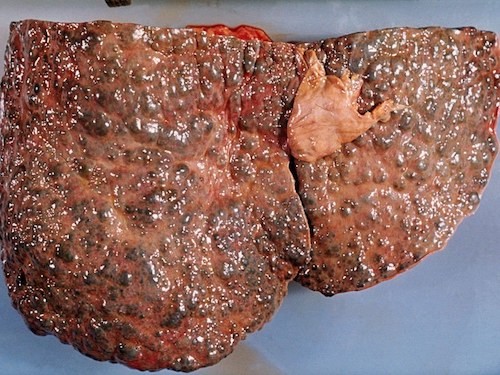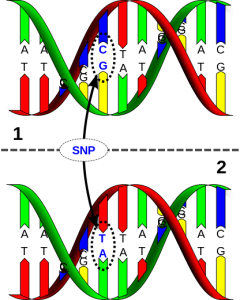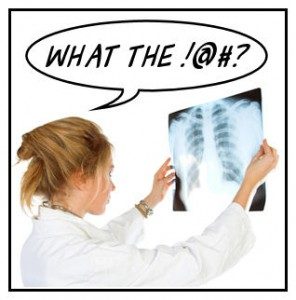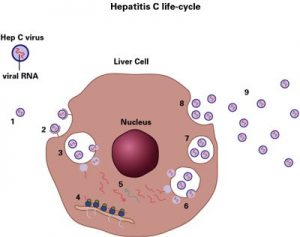
Cirrhosis of the Liver Stage 4
It's been 11 years since I started my Wiki and shared articles on Liver Disease. In that time the website in its various forms has had millions of visitors and helped countless people.
I've only ever asked for help once in those 11 years and that was to help pay the hosting. But that was only once.
For the rest of the years I have built, populated, maintained and tried to improve the website and given support to many people.
It now turns out that I have cancer of the throat - just diagnosed in January 2020.
I have created a Facebook page to post updates on - https://www.facebook.com/Craig-Cameron-My-Story-104963801053247/
Once I get 200 Likes I can change the name to remove the numbers on the end - and that will look better 🙂
I really would appreciate it if you would visit my Facebook page and 'Like' it -
Once I get some support from the people who visit this site I will remove this message.
Cirrhosis of the Liver Stage 4
This site can teach you how to manage, treat and even reverse cirrhosis of the liver stage 4. Many of our members have been able to resume near normal lives without needing a transplant.
If you are worried about cirrhosis this site can help you.
Looking for information on cirrhosis of the liver stage 4? Liver cirrhosis, a ‘silent killer’, is a chronic disease. There are no symptoms during the early phases of this disease. Read on to know about liver cirrhosis stages and cirrhosis of the liver life expectancy.
Liver cirrhosis indicates injured or damaged liver cells. Normal liver tissues get replaced with scar tissues during liver cirrhosis. Scarring of the liver is caused by long term injury or damage to the liver resulting in loss of liver function. Cirrhosis of the liver stage 4 denotes the final stages of the disease.
Liver plays an important role in digestion and detoxification. Cirrhosis of the liver affects the liver function. As liver cirrhosis cannot be reversed, the treatment involves only prevention of further progression of the disease.
Cirrhosis of the Liver Stages
Cirrhosis of the Liver Stage#1:
During this initial stage of cirrhosis, the person normally does not experience any symptoms. If closely observed, there are symptoms indicating liver function problem, which include dry mouth, fatigue, jaundice and enlargement of the upper stomach area. Itching sensation is also sometimes experienced.
The liver suffers from inflammation and abnormal tissue but disease progression and liver function deterioration is very slow. Advancement of cirrhosis of the liver can only be determined by biopsy results.
The initial stage of liver cirrhosis is actually called ‘compensated stage’, as the body successfully manages and compensates on its own for all the shortcomings that are brought on by malfunctioning of the liver.
Cirrhosis of the Liver Stage#2:
During this stage, abnormal tissues developed inside the liver get transformed into stiff bands of connective tissues. This process is known as fibrosis. Fibrosis and inflammation of the liver spreads and affects the portal veins and the surrounding regions.
Cirrhosis of the Liver Stage#3:
As the disease advances, all the stiff bands begin to merge with each other. This leads to the enlargement of affected areas. Disruption of liver functions is generally noticed during this stage, as the person experiences inability to digest fats. Vitamin deficiency can also be noticed due to problem in absorption of fat-soluble vitamins.
Cirrhosis of the Liver Stage#4:
The final stage of liver cirrhosis is known as the decompensated stage of cirrhosis. This stage is the most dreaded one. Liver transplant is the only treatment option for patients in the decompensated stage. (Note: This statement is not completely accurate. For those with Alcoholic Cirrhosis the damage can be halted and a return made to reasonably normal life by abstaining from alcohol, undertaking a regimen of vitamins and minerals and eating a healthy diet. This can and does happen as long as the disease is not too far advanced. Further information is available on this site which will set you on the right path. Many people who have joined this site have survived through the help given by this site.)
Worsening of all the symptoms can be noticed. Here is a list of most common liver cirrhosis symptoms.
Liver Cirrhosis Symptoms:
Compensated Stage
Fatigue
Extreme thirst
Thick coating on the dorsal surface of the tongue
Anorexia
Nausea
Abdominal bloating
Dull ache in the liver area
Cirrhosis of the Liver Stage 4 Symptoms:
Decompensated Stage
Spider moles
Liver shrinkage
Jaundice
Edema
Ascites
Liver palms
Low grade fever
Severe fatigue, exhaustion
Loss of appetite
Stomach pain and cramps
Easy bruising and bleeding (especially in the abdominal region)
Cirrhosis of the Liver Life Expectancy
Cirrhosis of the liver stage 4 can result in severe health complications such as portal hypertension, spleen enlargement, hardening of liver, kidney dysfunction and accumulation of fluid in the body. Loss of bone mass and a drop in the bone density can also be noticed. Pertaining to the impaired liver functioning, the body will lose its ability to detoxify itself, resulting in concentration of toxins in the body. This will lead to severe confusion, even a coma.
After heart disease and cancer, liver cirrhosis is the third leading cause of death. There are many types of cirrhosis, based on the causes. Alcoholic cirrhosis has the worst prognosis, when compared to primary biliary cirrhosis or cirrhosis induced by hepatitis. Cirrhosis life expectancy can be about 15 to 20 years if cirrhosis is detected during an early stage.
If the disease is detected in second stage, life expectancy will be about 6 to 10 years. Patients in earlier stages can opt for latest treatment options, liver transplant, latest medicines, etc. If cirrhosis is diagnosed during the last stage, then life expectancy will be about 1-3 years, depending upon the patient’s overall health, availability of advanced treatment, etc.
I hope the above information has helped you to understand what is cirrhosis of the liver. Liver cirrhosis does not have a sudden onset, it takes years of damage to produce harmful scarring, and then many more years of abuse for the liver to stop functioning completely. Overlooked underlying conditions make the condition deadly. Cirrhosis treatment can help stop or slow down the progression of the disease.
During cirrhosis of the liver stage 4, liver failure and other health complications ultimately result in death of the person. Since cirrhosis of the liver and death are closely associated, it is necessary to undergo routine medical check-ups to monitor liver function. Cirrhosis is mostly detected during the test for some other health problems. Half yearly examination can help improve your chances of detecting an early cirrhosis.
By Leena Palande
Published: 8/14/2010
Related Posts
Alcoholics beware — genetic variation linked to liver cirrhosis in Caucasians
Genetic Variation Linked to Liver Cirrhosis A new study by German researchers found that a variation in the PNPLA3 (adiponutrin) gene was associated with cirrhosis of the liver and elevated transaminase (liver enzyme) levels in alcoholic Caucasians. The risk of cirrhosis in alcoholics in the genetic high risk group might be as high as 25%…
Alcoholic liver disease is more aggressive than other chronic liver diseases
ALD is Aggressive 24-Aug-2010 While diagnostic and treatment options for chronic liver disease are numerous, their effectiveness is unclear. New findings show that patients hospitalized with alcoholic liver disease have an increased mortality risk compared to patients with non-alcoholic liver disease. This indicates that alcoholic liver disease is more aggressive than other chronic liver diseases.…
Alcoholic Liver Disease is Cureable
Alcoholic Liver Disease is Cureable The liver is an organ that is vital to the human body. Without a healthy, functioning liver the human body can only last up to 24 hours. It is responsible for detoxification, protein synthesis, and production of biochemicals necessary for digestion. Liver fibrosis, liver injury or a fatty liver can…
Alcoholic cirrhosis patients had high prevalence of complications at diagnosis
Complications at Diagnosis April 27, 2010 − Wiley-Blackwell A recent study by Danish researchers discovered patients with alcoholic cirrhosis had a high prevalence of complications at the time of the disease diagnosis. Researchers noted that complications, such as ascites (excessive fluid in the abdomen), were predictors of mortality, but did not develop in a predictable…
Seeking Solutions for Liver Cancer with Cirrhosis
Seeking Solutions for Liver Cancer with Cirrhosis Posted November 4th, 2011 Researchers from Japan are working on strategies to help those with primary liver cancer and moderate to severe cirrhosis. by Nicole Cutler, L.Ac. Hepatocellular carcinoma is a deadly cancer, taking the lives of many patients within a year of being diagnosed. Although several breakthroughs…
Cirrhosis and HCC Have Risen Dramatically in Hepatitis C Patients
Cirrhosis and HCC in Hepatitis C Patients The burden of cirrhosis, hepatic decompensation, and hepatocellular carcinoma has risen dramatically during the past decade among patients with chronic hepatitis C virus infection, Dr. Fasiha Kanwal and her colleagues reported in the April issue of Gastroenterology. In a large retrospective cohort study of more than 300,000 patients…
Alcoholic Liver Disease May Not Lead to Cancer
Alcoholic Liver Disease May Not Lead to Cancer Hepatocellular carcinoma surveillance would be expected to have a minimal effect on mortality and is unlikely to be cost-effective.> WEDNESDAY, June 20, 2012 (MedPage Today) — Patients with alcoholic cirrhosis have a lower risk of liver cancer than previously thought, Danish researchers found. In a Danish registry…
Management of Recurrent Hepatitis C Following Liver Transplantation: Fibrosing Cholestatic Hepatitis
Management of Recurrent Hepatitis C Although it occurs in less than 10% of transplant recipients with chronic HCV, a severe and rapidly progressive form of recurrent HCV infection characterized by cholestatic disease has a major impact on survival. In contrast to a chronic hepatitis observed in most patients with recurrent HCV, this syndrome is defined…
Hepatitis C Cirrhosis—NOT Necessarily a Terminal Disease
Hepatitis C Cirrhosis—NOT Necessarily a Terminal Disease Kia Saeian MD1 and K Rajender Reddy MD, FACP2 1Division of Gastroenterology and Hepatology, Medical College of Wisconsin, Milwaukee, WI 2Center for Liver Diseases, University of Miami School of Medicine, Miami, FL Abstract This retrospective study evaluated the morbidity and survival of patients with compensated, histologically proven cirrhosis…
Hepatitis and Social Security Disability
Hepatitis – Condition and Symptoms Hepatitis is an inflammation of the liver. In some cases, the liver heals on its own. In other cases, the condition can lead to fibrosis and cirrhosis. Persons with Hepatitis often have jaundice, poor appetite, and generally feel unwell, while some present no symptoms. Acute Hepatitis lasts less than six…









